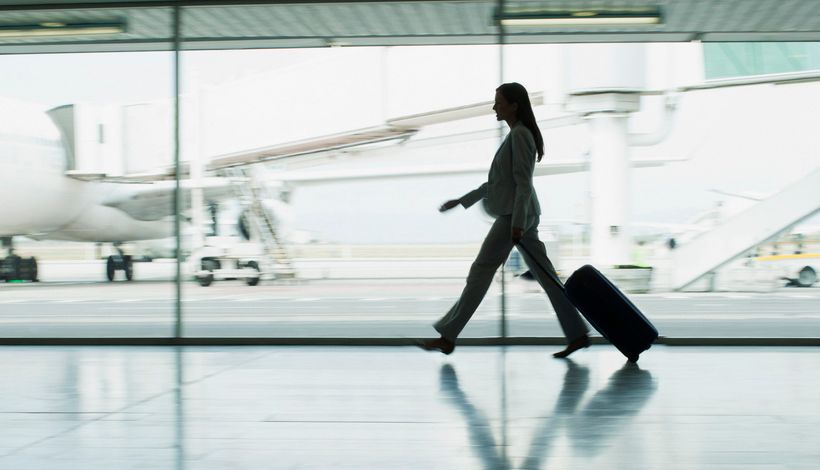Airplane Innovations That Could Change The Way We Fly!
In a competitive global aviation market, airlines are doing their best to incorporate innovative ways to cater to the needs of a customer and save operating costs at the same time.
With the help of technology, they have been able to come up with airplane designs and amenities that will help them beat their rivals and take passenger experience (PAX) to a whole new level.
To give you a peek into the future, here are a few interesting, amazing and downright scary airplane innovations that can change the way we fly.
1.Standing Airplane Seats

In a press conference in 2012, famous American carrier, Ryanair’s CEO Mr. Michael O’Leary pointed out that seat belts are unnecessary and airplanes are actually just “a bus with wings”.
He also suggested that there should be standing areas inside an airplane, which would eventually cost just $1 to book it.
While the general public laughed off these ideas, airplane manufacturers ‘Airbus’ & Italy based company ‘Aviointeriors’ took this pretty seriously.
In the 2017 “Aircraft Interiors Expo” held in Germany, Aviointeriors introduced a prototype called the ‘Sky Rider 2.0’.
These are ‘saddle seats’ which will allow people to lean a bit and shift their weight slightly on the seat while basically standing.
The concept of standing seats have been disregarded by authorities over the years, however, the design and applicability of the Sky Rider 2.0 may force them to rethink their decision.
2.Doughnut Shaped Airplanes

These airplane designs by Airbus look like a spacecraft from Si-Fi movies!
A cross between a UFO and a glider, this design allows better utilisation of space than other aircrafts and hence allows it to carry more passengers.
The doughnut-like shape between the nose and wings of the airplane will seat various classes of passengers, with economy class in the outer ring & business class in the middle.
This design has been patented by the airplane manufacturer and if implemented, it will make the current airplane design redundant.
3.Stacked Airplane Seats

Cramped seating arrangements on economy flights could get significantly worse if Airbus’ latest design ever becomes a reality.
A patent filed by the airplane manufacturer envisions stacking passengers on top of one another.
The design, which Airbus claims will provide a high level of comfort for the passengers, involves two levels of seating arrangements in a standard aircraft cabin.
A similar tiered approach to air travel was conceived by a UK based company “Factorydesign” and claims to allow for 30 percent more passengers on a standard airplane.
4.Upright Sleep Support System

For most of us sleeping on an airplane is not very easy.
However, airplane manufacturers ‘Boeing’ have designed a device that looks like a backpack but unfolds to turn into a cuddler of sorts.
It is completely adjustable and is attached to the seat, allowing you to lean forward and sleep with your head supported by a cushion.
This is a great concept if implemented, however, issues over space inside the cabin and reusability have been raised by many.
5.Self Cleaning Seats

The microbes lurking in airplane seats could soon be a thing of the past!
Recaro Aircraft Seating GmbH, whose customers include Cathay Pacific Airways Ltd., says it’s developing a seat infused with a disinfectant that destroys almost every germ on contact within seconds.
These seats won’t just cleanse themselves but will also display each incoming passenger how well it has done the job.
According to the company, these seats should be available in the next 2 years.
6.Cargo Hold Relaxation Area

Airbus is currently developing a design to turn its cargo holds into flying capsule hotels.
In April 2018, Airbus announced that they plan to make airplanes with a cargo hold that can be converted into sleeping capsules and relaxation compartments for passengers.
The firm has partnered with Zodiac Aerospace, an aviation equipment supplier, to create the concept, which could give economy class fliers the chance to swap cramped seating for capsule-style beds and sofas.
The lower deck could also be turned into a gym, a fine-dining restaurant or even a kids mini playground.
According to the Head of Cabin & Cargo at Airbus, Mr. Geoff Pinner, Airlines are looking for innovative ways to use space on their aircraft. On a long-haul flight, the airline could rent out each of these spaces to a number of passengers in different time slots throughout the flight.
7.In-Flight Virtual Reality

With Lufthansa recently offering Virtual Reality(VR) in-flight entertainment to passengers on its Dubai bound flights, it looks like this technology is finally here.
Airbus has patented such a helmet attached to the airplane seat, which creates an immersive environment for watching 3D movies, playing video games or simply relaxing.
This will surely help passengers have a pleasant flying experience, especially if they are flying for the first time.
8.Smart Toilet Tap/Faucet

The “E-Tom Smart Faucet”, designed by researchers from Cranfield University in the UK, helps airplanes save on water, and therefore fuel.
The faucets atomize water, breaking it into a fine mist that still comes out fast enough to clean hands, allowing lavatory-goers to use 90 percent less water.
It also has charcoal filters to keep water pure and can clean itself.
Modern technological innovations in air travel are slowly coming to India and we at AirWhizz are continuously trying to implement it and bring it to you. From real-time flight updates to providing information about airports and airlines, we help you plan your trip on the move.
Download the AirWhizz App NOW and Fly Stress-Free!




















